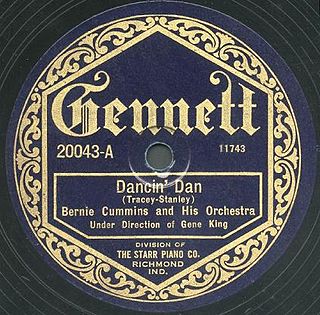 W
WGennett was an American record company and label in Richmond, Indiana, United States, which flourished in the 1920s. Gennett produced some of the earliest recordings by Louis Armstrong, King Oliver, Bix Beiderbecke, and Hoagy Carmichael. Its roster also included Jelly Roll Morton, Blind Lemon Jefferson, Charley Patton, and Gene Autry.
 W
WLouis Daniel Armstrong, nicknamed "Satchmo", "Satch", and "Pops", was an American trumpeter and vocalist. He is among the most influential figures in jazz. His career spanned five decades and different eras in the history of jazz.
 W
WClarence "Tom" Ashley was an American musician and singer, who played the clawhammer banjo and the guitar. He began performing at medicine shows in the Southern Appalachian region as early as 1911, and gained initial fame during the late 1920s as both a solo recording artist and as a member of various string bands. After his "rediscovery" during the folk revival of the 1960s, Ashley spent the last years of his life playing at folk music concerts, including appearances at Carnegie Hall in New York and at the Newport Folk Festival in Rhode Island.
 W
WOrvon Grover "Gene" Autry, nicknamed the Singing Cowboy, was an American singer, songwriter, actor, musician, and rodeo performer who gained fame largely by singing in a crooning style on radio, in films, and on television for more than three decades beginning in the early 1930s. Autry was the owner of a television station, several radio stations in Southern California, and the Los Angeles/California Angels Major League Baseball team from 1961 to 1997.
 W
WFranklyn Baur was a popular tenor vocal recording artist.
 W
WSidney Joseph Bechet was an American jazz saxophonist, clarinetist, and composer. He was one of the first important soloists in jazz, and first recorded several months before trumpeter Louis Armstrong. His erratic temperament hampered his career, and not until the late 1940s did he earn wide acclaim.
 W
WLeon Bismark "Bix" Beiderbecke was an American jazz cornetist, pianist, and composer.
 W
WFrancis Hillman "Scrapper" Blackwell was an American blues guitarist and singer, best known as half of the guitar-piano duo he formed with Leroy Carr in the late 1920s and early 1930s. He was an acoustic single-note picker in the Chicago blues and Piedmont blues styles. Some critics have noted that he veered towards jazz.
 W
WBig Bill Broonzy was an American blues singer, songwriter and guitarist. His career began in the 1920s, when he played country blues to mostly African-American audiences. Through the 1930s and 1940s he successfully navigated a transition in style to a more urban blues sound popular with working-class African-American audiences. In the 1950s a return to his traditional folk-blues roots made him one of the leading figures of the emerging American folk music revival and an international star. His long and varied career marks him as one of the key figures in the development of blues music in the 20th century.
 W
WThe Bucktown Five was a jazz group active in the early 1920s in the Chicago area of the United States. The group played a New Orleans style of collective improvisational jazz and were forerunners of the Chicago style which developed in later years. About eighteen months after breaking up, many of the same players recorded in Chicago as the Stomp Six. The Bucktown Five also recorded with Bix Beiderbecke.
 W
WCliff Carlisle was an American country and blues musician, singer and songwriter. Carlisle was a yodeler and was a pioneer in the use of the Hawaiian steel guitar in country music. He was a brother of country music star Bill Carlisle.
 W
WHoagland Howard Carmichael was an American songwriter, musician, actor, singer and attorney. American composer and author Alec Wilder described Carmichael as the "most talented, inventive, sophisticated and jazz-oriented of all the great craftsmen" of pop songs in the first half of the 20th century. Carmichael was one of the most successful Tin Pan Alley songwriters of the 1930s, and was among the first singer-songwriters in the age of mass media to utilize new communication technologies such as television, electronic microphones, and sound recordings.
 W
WBurl C. "Jaybird" Coleman was an American country blues harmonica player, vocalist, and guitarist. He was a popular musical attraction throughout Alabama and recorded several sides in the late 1920s and early 1930s.
 W
WArthur Francis Collins was an American baritone who was one of the most prolific and beloved of pioneer recording artists, regarded in his day as "King of the Ragtime Singers".
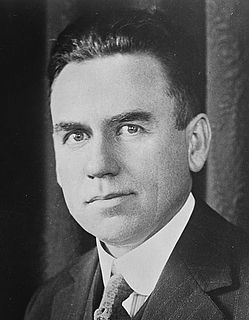 W
WMarion Try Slaughter, better known by his stage name Vernon Dalhart, was an American country music singer and songwriter. His recording of the classic ballad "Wreck of the Old 97" was the first country song to sell one million copies.
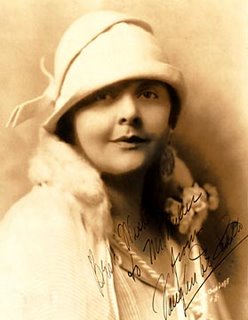 W
WVaughn De Leath was an American female singer who gained popularity in the 1920s, earning the sobriquets "The Original Radio Girl" and the "First Lady of Radio." Although very popular in the 1920s, De Leath is obscure in modern times.
 W
WThomas Andrew Dorsey was an American musician, composer, and Christian evangelist influential in the development of early blues and 20th-century gospel music. He penned 3,000 songs, a third of them gospel, including "Take My Hand, Precious Lord" and "Peace in the Valley". Recordings of these sold millions of copies in both gospel and secular markets in the 20th century.
 W
WJimmy Durante was an American actor, comedian, singer, vaudevillian, and pianist. His distinctive gravelly speech, Lower East Side accent, comic language-butchery, jazz-influenced songs, and prominent nose helped make him one of America's most familiar and popular personalities of the 1920s through the 1970s. He often referred to his nose as the schnozzola, and the word became his nickname.
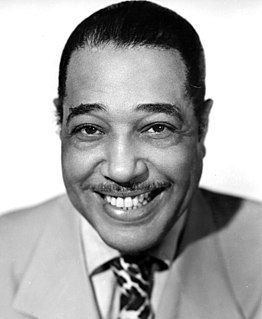 W
WEdward Kennedy "Duke" Ellington was an American composer, pianist, and leader of a jazz orchestra from 1923 through the rest of his life.
 W
WFrank Ferera was a Hawaiian musician who recorded successfully between 1915 and 1930. He was the first star of Hawaiian music and influenced many later artists.
 W
WPietro Floridia was an Italian composer of classical music.
 W
WReverend J.M. Gates was an American preacher who recorded sermons and gospel songs extensively between the mid-1920s and 1940s. Recording over 200 sides in his career, Gates was one of the most prolific preachers of the pre-war era, and was largely responsible for the popularity in recorded sermons. Among the Reverend's most successful sermons, include "Death's Black Train Is Coming", "I'm Gonna Die with the Staff in My Hand"", and "Death Might Be Your Santa Claus".
 W
WArt Gillham was an American songwriter, who was among the first crooners as a pioneer radio artist and a recording artist for Columbia Records.
 W
WFred Hall was an American pianist, bandleader and composer. Hall was born in New York City and began his musical career working as a song-plugger for various music publishers. As a bandleader Hall and his men recorded prolifically for many labels from 1925 onwards. Many recordings featured vocalist Arthur Fields with whom Hall enjoyed a lengthy partnership, co-writing scores of songs, the better known ones including Eleven More Months And Ten More Days and I Got A Code In My Dose. Hall and Fields also appeared together on the NBC radio show The Sunday Driver.
 W
WWendell Woods Hall was an American country singer, vaudeville artist, songwriter, pioneer radio performer, Victor recording artist and ukulele player.
 W
WColeman Randolph Hawkins, nicknamed "Hawk" and sometimes "Bean", was an American jazz tenor saxophonist. One of the first prominent jazz musicians on his instrument, as Joachim E. Berendt explained: "there were some tenor players before him, but the instrument was not an acknowledged jazz horn". Hawkins biographer John Chilton described the prevalent styles of tenor saxophone solos prior to Hawkins as "mooing" and "rubbery belches." Hawkins cited as influences Happy Caldwell, Stump Evans, and Prince Robinson, although he was the first to tailor his method of improvisation to the saxophone rather than imitate the techniques of the clarinet. Hawkins' virtuosic, arpeggiated approach to improvisation, with his characteristic rich, emotional, and vibrato-laden tonal style, was the main influence on a generation of tenor players that included Chu Berry, Charlie Barnet, Tex Beneke, Ben Webster, Vido Musso, Herschel Evans, Buddy Tate, and Don Byas, and through them the later tenormen, Arnett Cobb, Illinois Jacquet, Flip Phillips, Ike Quebec, Al Sears, Paul Gonsalves, and Lucky Thompson. While Hawkins became known with swing music during the big band era, he had a role in the development of bebop in the 1940s.
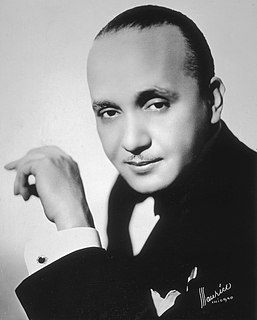 W
WJames Fletcher Hamilton Henderson was an American pianist, bandleader, arranger and composer, important in the development of big band jazz and swing music. He was one of the most prolific black musical arrangers and, along with Duke Ellington, is considered one of the most influential arrangers and bandleaders in jazz history. Henderson's influence was vast. He helped bridge the gap between the Dixieland and the swing eras. He was often known as "Smack" Henderson.
 W
WEdna Hicks was an American blues singer and musician. Her recorded songs include "Hard Luck Blues" and "Poor Me Blues". She also recorded "Down Hearted Blues", and "Gulf Coast Blues" on the Brunswick label in 1923.
 W
WEarl Kenneth Hines, also known as Earl "Fatha" Hines, was an American jazz pianist and bandleader. He was one of the most influential figures in the development of jazz piano and, according to one source, "one of a small number of pianists whose playing shaped the history of jazz".
 W
WAlberta Hunter was an American jazz and blues singer and songwriter from the early 1920s to the late 1950s. After twenty years of working as a nurse, Hunter resumed her singing career in 1977.
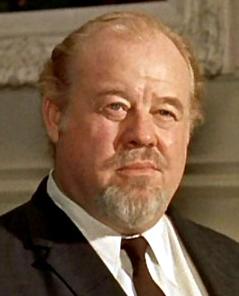 W
WBurl Icle Ivanhoe Ives was an American singer, musician, actor, and author.
 W
WLemon Henry "Blind Lemon" Jefferson was an American blues and gospel singer-songwriter and musician. He was one of the most popular blues singers of the 1920s and has been called the "Father of the Texas Blues".
 W
WAlonzo "Lonnie" Johnson was an American blues and jazz singer, guitarist, violinist and songwriter. He was a pioneer of jazz guitar and jazz violin and is recognized as the first to play an electrically amplified violin.
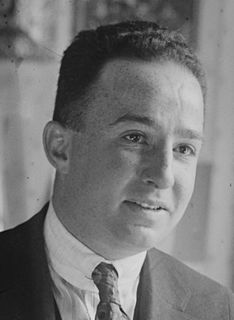 W
WIrving Kaufman was a prolific American early twentieth century singer, recording artist and vaudeville performer.
 W
WSamuel Charles Lanin was an American jazz bandleader.
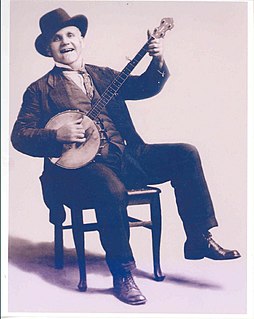 W
WUncle Dave Macon, born David Harrison Macon—also known as "The Dixie Dewdrop"—was an American old-time banjo player, singer, songwriter, and comedian. Known for his chin whiskers, plug hat, gold teeth, and gates-ajar collar, he gained regional fame as a vaudeville performer in the early 1920s before becoming the first star of the Grand Ole Opry in the latter half of the decade.
 W
WThe Memphis Jug Band was an American musical group active from the mid-1920s to the late 1950s. The band featured harmonica, kazoo, fiddle and mandolin or banjolin, backed by guitar, piano, washboard, washtub bass and jug. They played slow blues, pop songs, humorous songs and upbeat dance numbers with jazz and string band flavors. The band made the first commercial recordings in Memphis, Tennessee, and recorded more sides than any other prewar jug band.
 W
WThe New Orleans Owls were an early jazz band from New Orleans that descended from The Invincibles String band and recorded 23 sides for Columbia from 1925 to 1927 on 78 rpm Gramophone record. They are reportedly the first group to record by the electric system operating from a mobile recording van. They played principally for the dancers in the ballroom of the Roosevelt Hotel in New Orleans. The replaced Abbie Brunies' Halfway House Orchestra at the Halfway House dancehall in the late 1920s.
 W
WThe New Orleans Rhythm Kings (NORK) were one of the most influential jazz bands of the early to mid-1920s. The band included New Orleans and Chicago musicians who helped shape Chicago jazz and influenced many younger jazz musicians.
 W
WJoseph Nathan "King" Oliver was an American jazz cornet player and bandleader. He was particularly recognized for his playing style and his pioneering use of mutes in jazz. Also a notable composer, he wrote many tunes still played today, including "Dippermouth Blues", "Sweet Like This", "Canal Street Blues", and "Doctor Jazz". He was the mentor and teacher of Louis Armstrong. His influence was such that Armstrong claimed, "if it had not been for Joe Oliver, Jazz would not be what it is today."
 W
WCharley Patton, also known as Charlie Patton, was an American Delta blues musician. Considered by many to be the "Father of the Delta Blues", he created an enduring body of American music and inspired most Delta blues musicians. The musicologist Robert Palmer considered him one of the most important American musicians of the twentieth century.
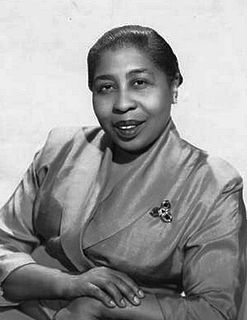 W
WAmanda E. Randolph was an American actress, singer and musician. She was the first African-American performer to star in a regularly scheduled network television show, appearing in DuMont's The Laytons.
 W
WHomer Alvan Rodeheaver was an American evangelist, music director, music publisher, composer of gospel songs, and pioneer in the recording of sacred music.
 W
WPosey Rorer was an American old-time fiddler who was best known for being a member of the American string band Charlie Poole and the North Carolina Ramblers.
 W
WJoseph Samuels was an American musician and bandleader, who is today virtually only known through his recordings.
 W
WWilliam Shade Jr., known as Will Shade, was a Memphis blues musician, best known for his leadership of the Memphis Jug Band. He was commonly called Son Brimmer, a nickname from his grandmother Annie Brimmer. The name apparently stuck when other members of the band noticed that the sun bothered him and he used the brim of a hat to shade his eyes.
 W
WArtie Shaw was an American clarinetist, composer, bandleader, actor and author of both fiction and non-fiction.
 W
WSingin' Sam aka Harry Frankel was a minstrel performer, vaudevillian and popular personality during the early days of radio. He was best known as "Singin' Sam, the Barbasol Man" for his long association with that company.
 W
WAileen Stanley, born Maude Elsie Aileen Muggeridge, was one of the most popular American singers of the early 1920s.
 W
WThe Starr Piano Company was an American manufacturer of pianos from the late 1800s to the middle 1900s. Founded by James Starr, the company also made phonographs and records and was the parent company of the jazz label Gennett.
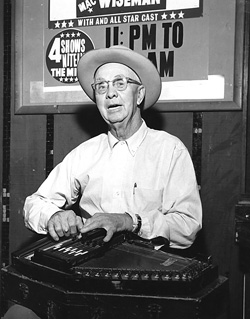 W
WErnest Van "Pop" Stoneman was an American musician, ranked among the prominent recording artists of country music's first commercial decade.
 W
WRoosevelt Sykes was an American blues musician, also known as "The Honeydripper".
 W
WOrie Frank Trumbauer was one of the leading jazz saxophonists of the 1920s and 1930s. His main instrument was the C-melody saxophone, a now-uncommon instrument between an alto and tenor saxophone in size and pitch. He also played alto saxophone, bassoon, clarinet and several other instruments.
 W
WThomas Wright "Fats" Waller was an American jazz pianist, organist, composer, violinist, singer, and comedic entertainer. His innovations in the Harlem stride style laid the groundwork for modern jazz piano. His best-known compositions, "Ain't Misbehavin'" and "Honeysuckle Rose", were inducted into the Grammy Hall of Fame in 1984 and 1999. Waller copyrighted over 400 songs, many of them co-written with his closest collaborator, Andy Razaf. Razaf described his partner as "the soul of melody... a man who made the piano sing... both big in body and in mind... known for his generosity... a bubbling bundle of joy". It is likely that he composed many more popular songs than he has been credited: when in financial difficulties he had a habit of selling songs to other writers and performers who claimed them as their own.
 W
WLawrence Welk was an American musician, accordionist, bandleader, and television impresario, who hosted the television program The Lawrence Welk Show from 1951 to 1982. His style came to be known to his large audience of radio, television, and live-performance fans as "champagne music".
 W
WFess Williams (né Stanley R. Williams; April 10, 1894 – December 17, 1975) was an American jazz musician.
 W
WThe Wolverines were an American jazz band. They were one of the most successful territory bands of the American Midwest in the 1920s.
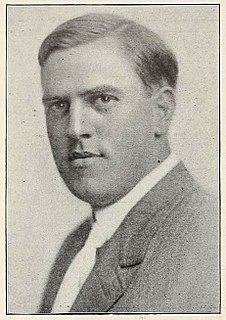 W
WHarry A. Yerkes was a marimba player, inventor, and recording manager who assembled many recording sessions in the early years of jazz. Many of the sessions organized by Yerkes used his name for the artist credit, including Yerkes' Jazarimba Orchestra and Yerkes' Marimbaphone Band on Columbia Records, which are estimated to have some of the best selling records of 1919 and 1921.